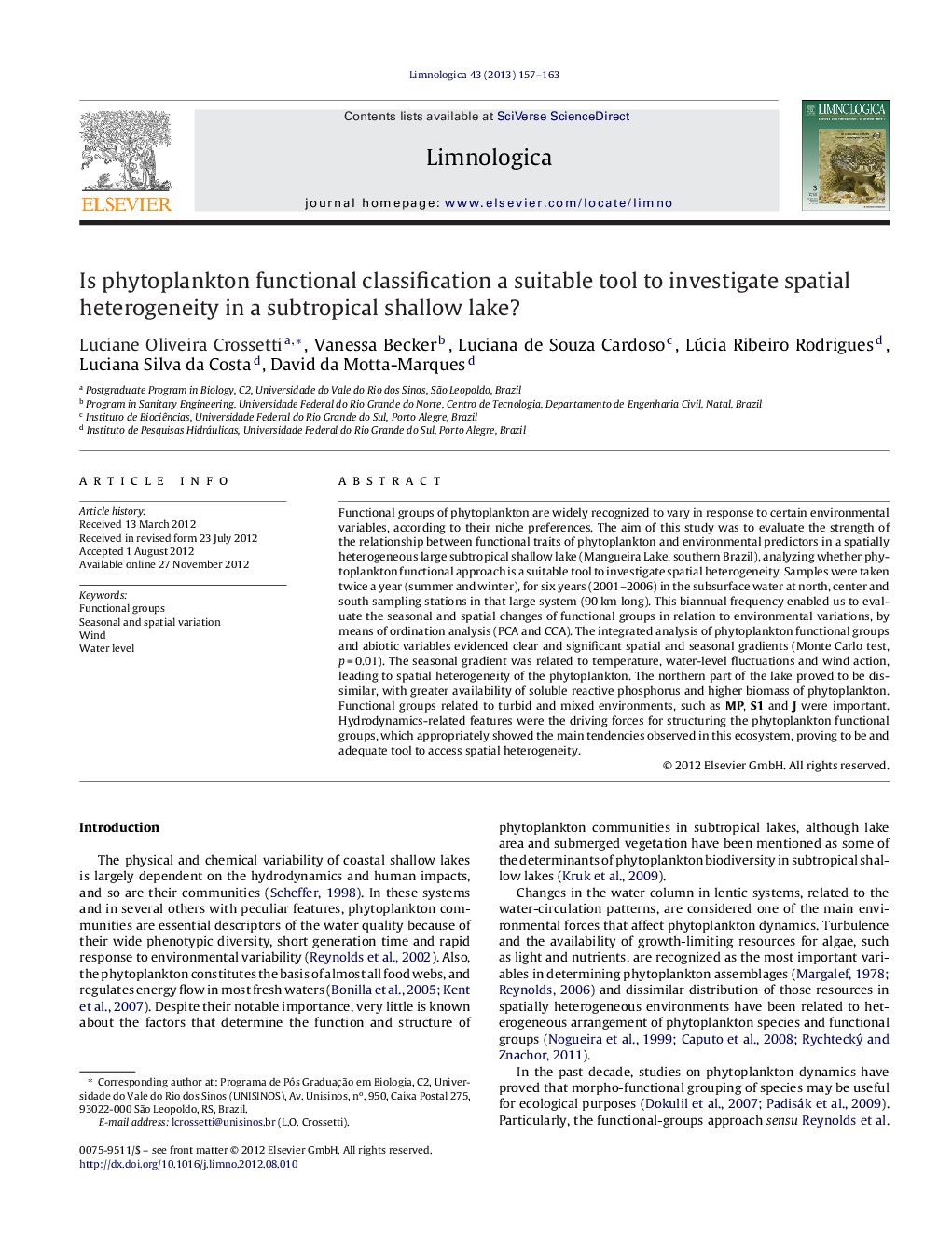| Article ID | Journal | Published Year | Pages | File Type |
|---|---|---|---|---|
| 4400462 | Limnologica - Ecology and Management of Inland Waters | 2013 | 7 Pages |
Functional groups of phytoplankton are widely recognized to vary in response to certain environmental variables, according to their niche preferences. The aim of this study was to evaluate the strength of the relationship between functional traits of phytoplankton and environmental predictors in a spatially heterogeneous large subtropical shallow lake (Mangueira Lake, southern Brazil), analyzing whether phytoplankton functional approach is a suitable tool to investigate spatial heterogeneity. Samples were taken twice a year (summer and winter), for six years (2001–2006) in the subsurface water at north, center and south sampling stations in that large system (90 km long). This biannual frequency enabled us to evaluate the seasonal and spatial changes of functional groups in relation to environmental variations, by means of ordination analysis (PCA and CCA). The integrated analysis of phytoplankton functional groups and abiotic variables evidenced clear and significant spatial and seasonal gradients (Monte Carlo test, p = 0.01). The seasonal gradient was related to temperature, water-level fluctuations and wind action, leading to spatial heterogeneity of the phytoplankton. The northern part of the lake proved to be dissimilar, with greater availability of soluble reactive phosphorus and higher biomass of phytoplankton. Functional groups related to turbid and mixed environments, such as MP, S1 and J were important. Hydrodynamics-related features were the driving forces for structuring the phytoplankton functional groups, which appropriately showed the main tendencies observed in this ecosystem, proving to be and adequate tool to access spatial heterogeneity.
